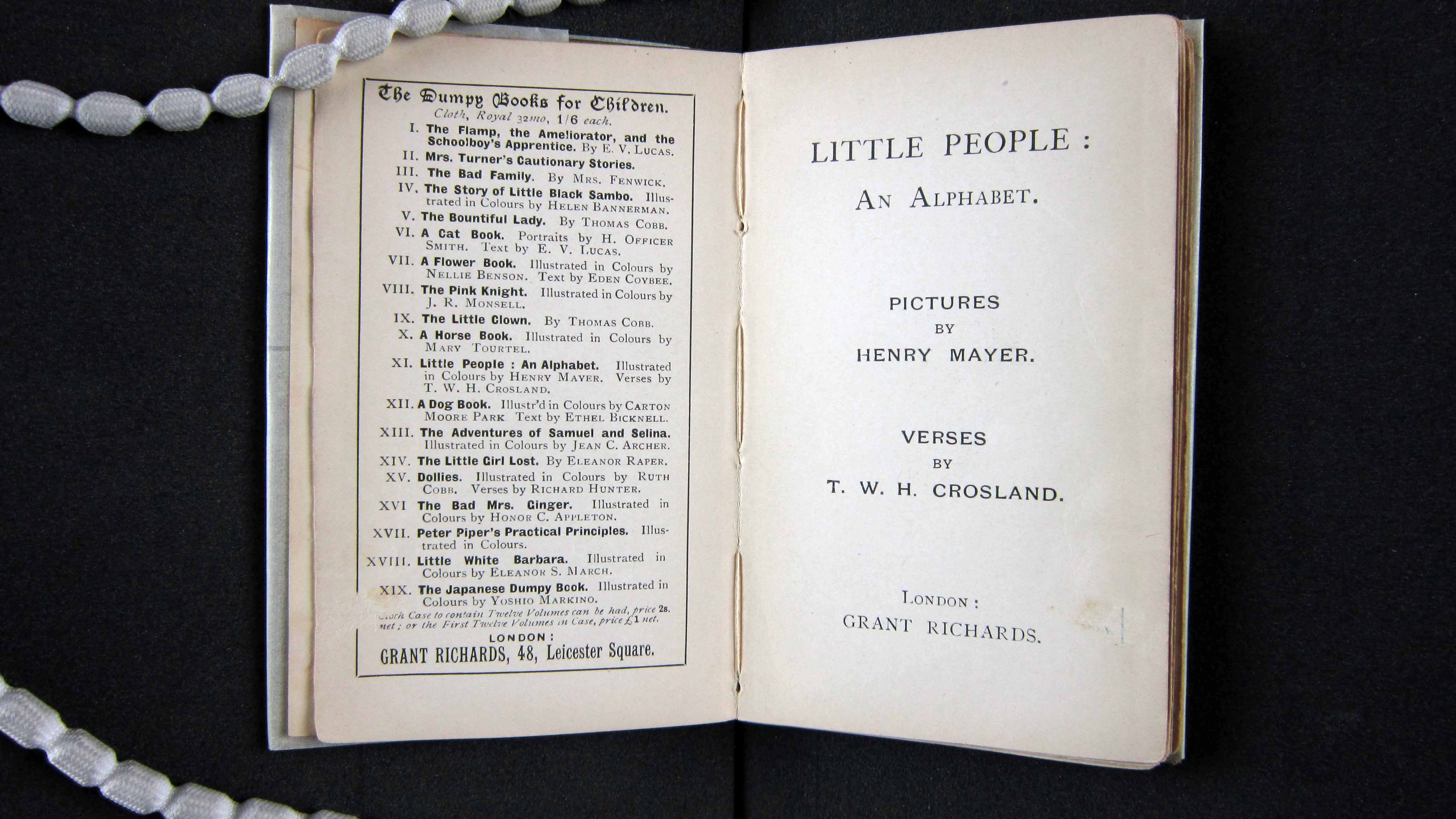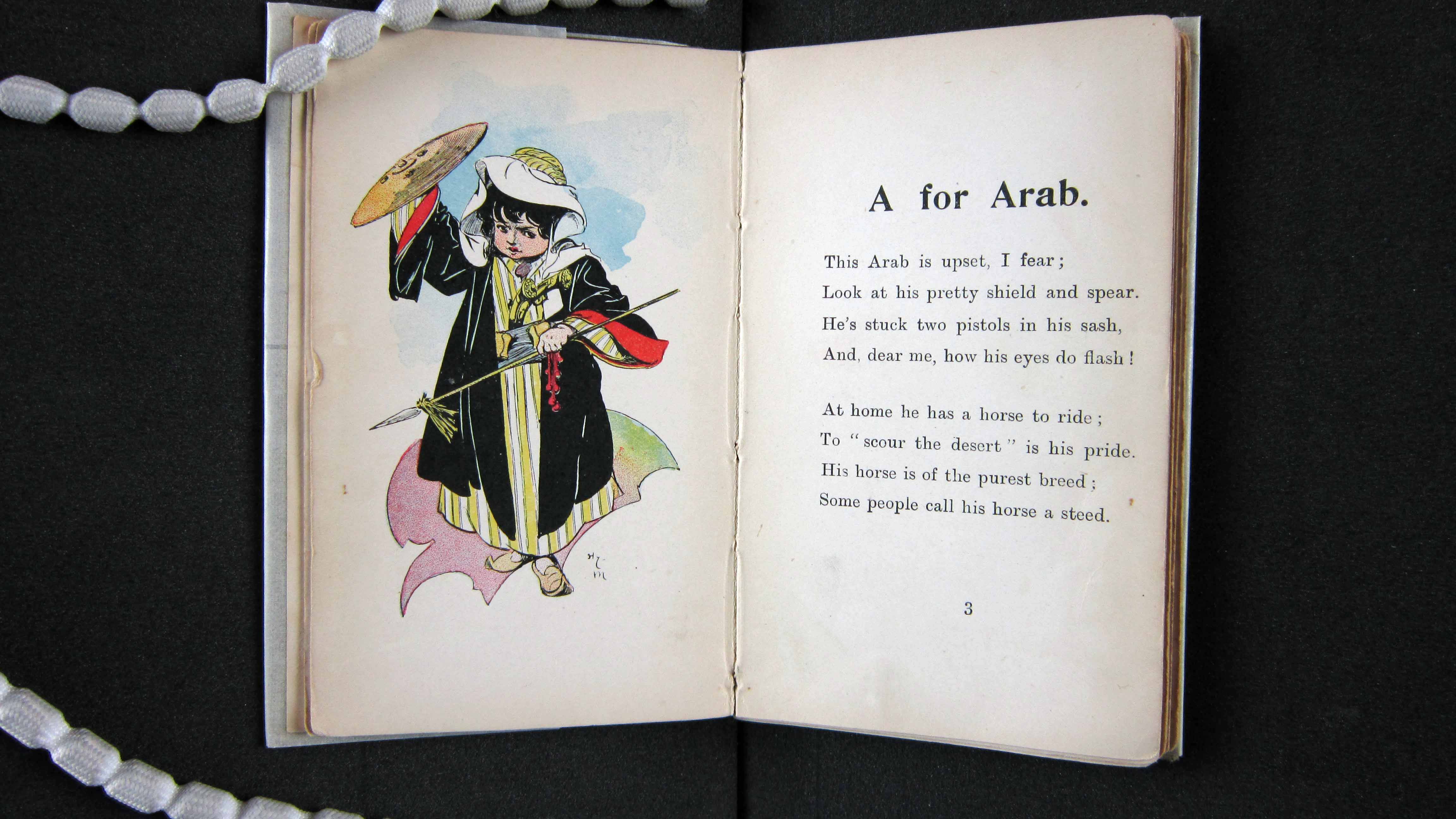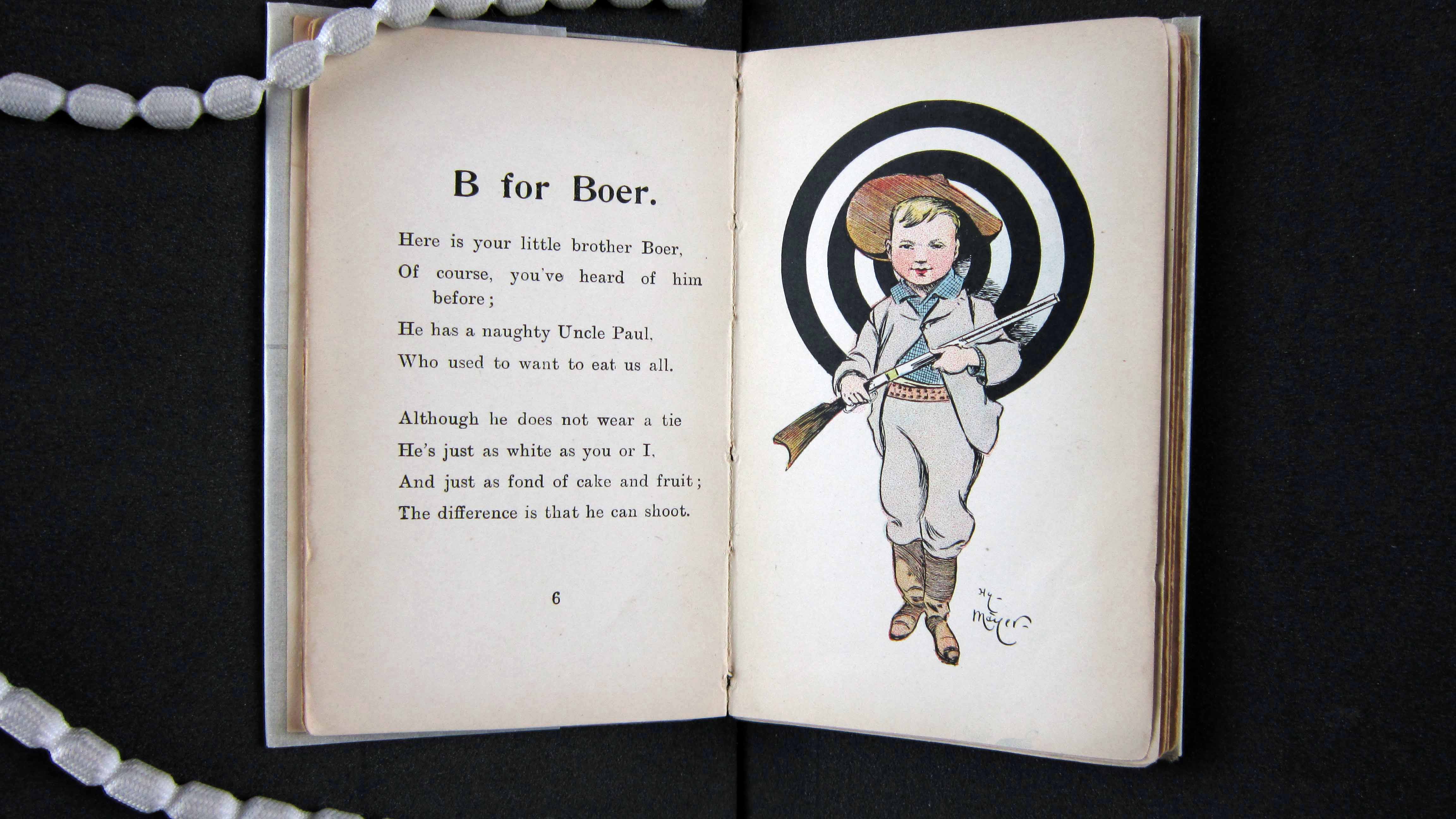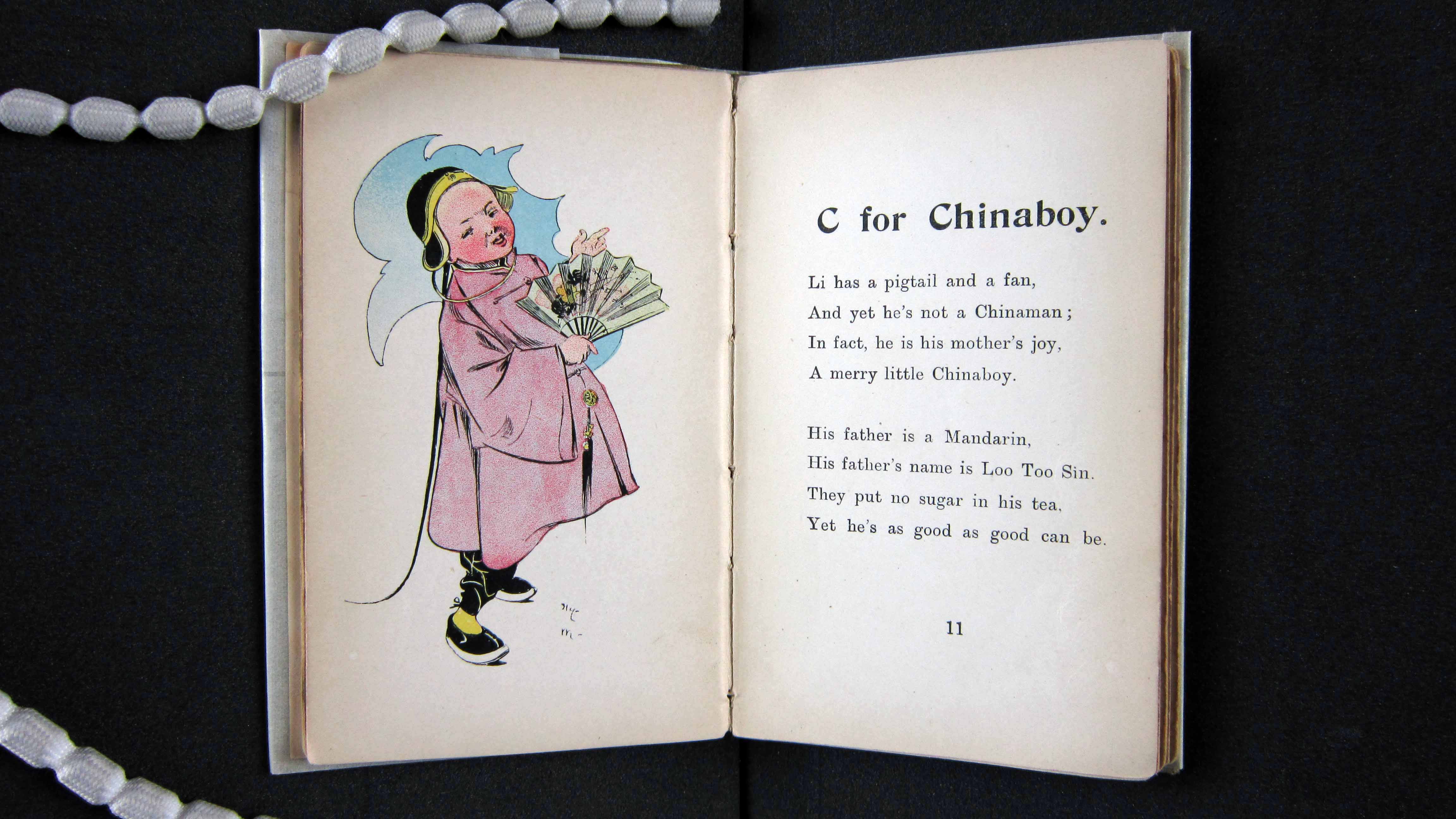

Alphabet books offer a vivid insight into the history of literacy and culture, as well as concepts of childhood. The Children's Book Collection at UCLA contains a rich array of these materials, some well-worn and much-used, some still bright and fresh. Each is a gem of print production and graphical imagery from another time and place. Though the history of alphabet books continues to the present, this exhibit focuses on the works in our collections published between 1700 and 1900, including horn books, primers, works of didacticism and seriousness, whimsy and play.
2. A Jumble ABC
3. A Little Pretty Pocket-Book
4. A New Lottery Book of Birds And Beasts
5. A Pretty Play-Thing for Children of All Denominations
8. ABC of Objects for Home And School
10. ABC with Pictures & Verses
12. Alphabet Et Instruction Pour Les Enfans
16. Dolly's ABC Book
17. Flora's ABC
18. Home ABC
22. Hornbook C. 1700
23. Large Letters for the Little Ones
24. Little ABC Book
25. Little People: An Alphabet
26. Martin's Nursery Battledoor
27. Mother Goose ABC
28. My Darling's ABC
29. Orbis Sensualium Pictus Quadrilinguis
30. People of All Nations: A Useful Toy for Girl Or Boy
31. Picture Alphabet
32. Pretty ABC
33. Railway ABC
34. Rusher's Reading Made Most Easy
38. The Alphabet of Old Friends
40. The Amusing Alphabet for Young Children Beginning To Read
42. The Child's Christian Education
45. The Easter Gift
47. The Favorite Alphabet for the Nursery
49. The Franklin Alphabet And Primer
51. The Golden ABC
55. The Moral And Entertaining Alphabet
57. The Old Testament Alphabet
59. The Picture Alphabet for Little Children
62. The Sunday ABC
63. The Union ABC
64. The Young Child's ABC, Or, First Book
65. Tom Thumb's Alphabet: Picture Baby-Books
67. Warne's Alphabet And Word Book: with Coloured Pictures
68. Wood's Royal Nursery Alphabet
Title Little People: An Alphabet




Full description This charming book depicts each letter of the alphabet with a child from a country associated with the letter, and has accompanying text. Through the images and text national stereotypes are conveyed, teaching children the hierarchies of power within societies and amongst nations.
Literacy The content of the book indicates the reader would need to possess an international literacy in order to understand references in the verses to people of other nations. The book expresses popularly held stereotypes at the time. For example, for the letter C, boys from China are described as being "merry" and "good." For the letter A, Arabian boys are described as being "upset" and fierce. This book was published in London during early 20th century, a time when many nations and nationalities were becoming widely known to Western culture. The reader of this book would be learning these national stereotypes.
Childhood The reader imagined by this book would be a child beginning to learn the hierarchies of power, but who is still enjoying the pleasantries of childhood. Through the text a reader finds that the illustrated children are not all depicted in an equally favorable light. For the letter P a Persian is richly dressed and "roves through rose-gardens and lemon groves." However, for the letter N, a Neapolitan (a person from Naples, Italy) is dressed in plebian clothing and "plays the pipes for pence... to help him on his weary way". Despite the class differences between the Persian and the Neapolitan, both of the children are depicted with doll-like faces conveying the Western notion of the innocence of childhood.
Iconography The depictions of nationalities in this book reflect the Western values of power structures and the belief in English superiority over other countries. For example, the letter K depicts a Kaffir (a person from South Africa), simply wearing a diaper, he possesses no weapons, and the text describes him as "sly." In contrast, the letter E depicts an English, wearing a soldier uniform, carrying a sword, saluting the reader with a direct gaze, and the text describes him as a "splendid race... sturdy...honest...they own much of the land and all of the sea...they will never be slaves." This contrast between the Kaffir and the English illustrates the dominant view in Victorian culture of the English being the superior nation.
Production In 1897, Grant Richards started his own publishing company, which became known for producing plays, poems, and other literary works. Richards also produced series such as World's Classics and The Dumpy Books for Children, which includes Helen Bannerman's infamous children's book The Story of Little Black Sambo. Unfortunately, Richards declared bankruptcy twice, and his publishing company eventually failed.
Creator T. W. H. (Thomas William Hodgson) Crosland
Publisher Grant Richards
Publication place London
Date 1902
UCLA Call Number CBC PZ7 .D89 no.11
Repository UCLA Charles E. Young Research Library, Dept. of Special Collections
Dimensions 14 cm
Technologies of production Printing
Additional Information Illustrator: Henry Mayer
Caption